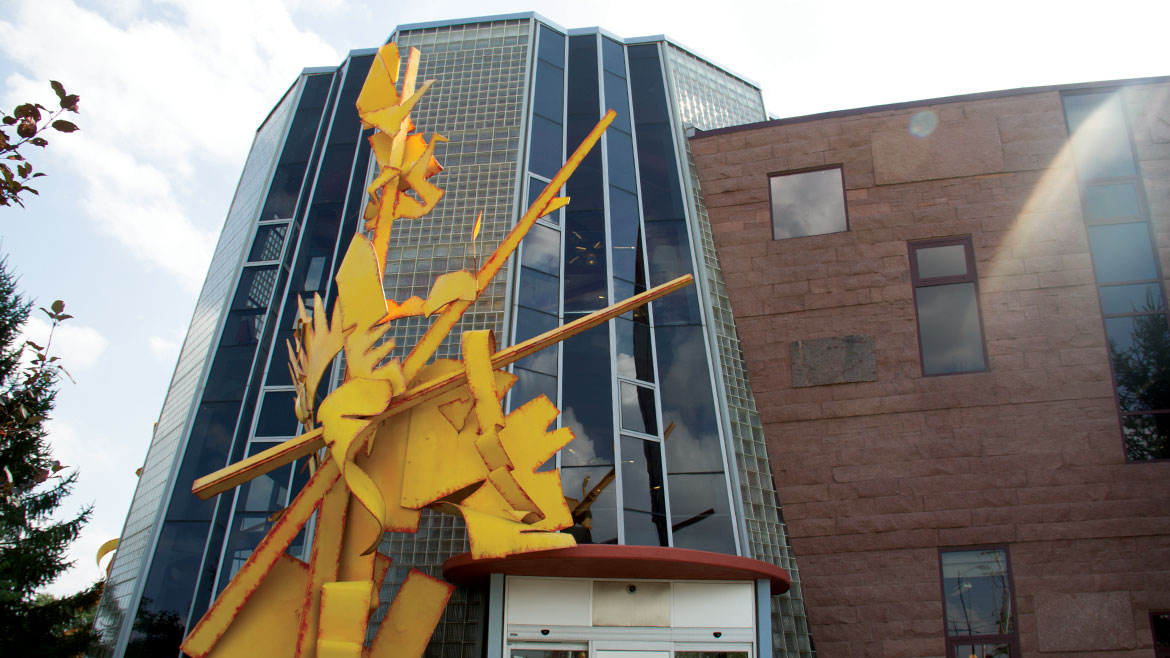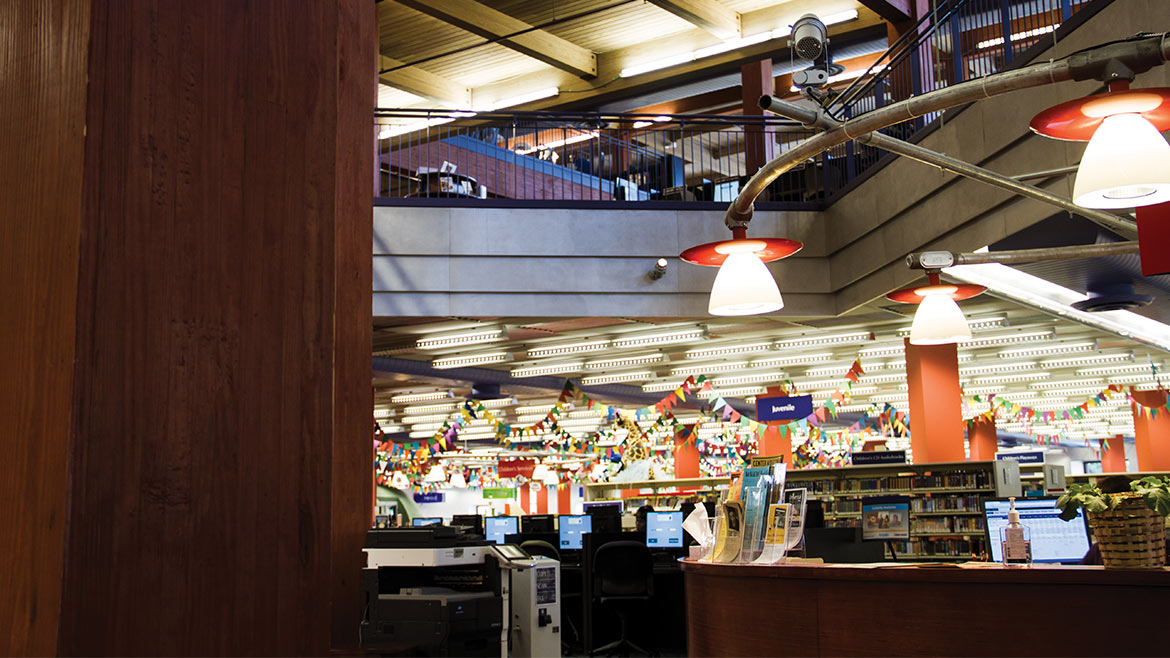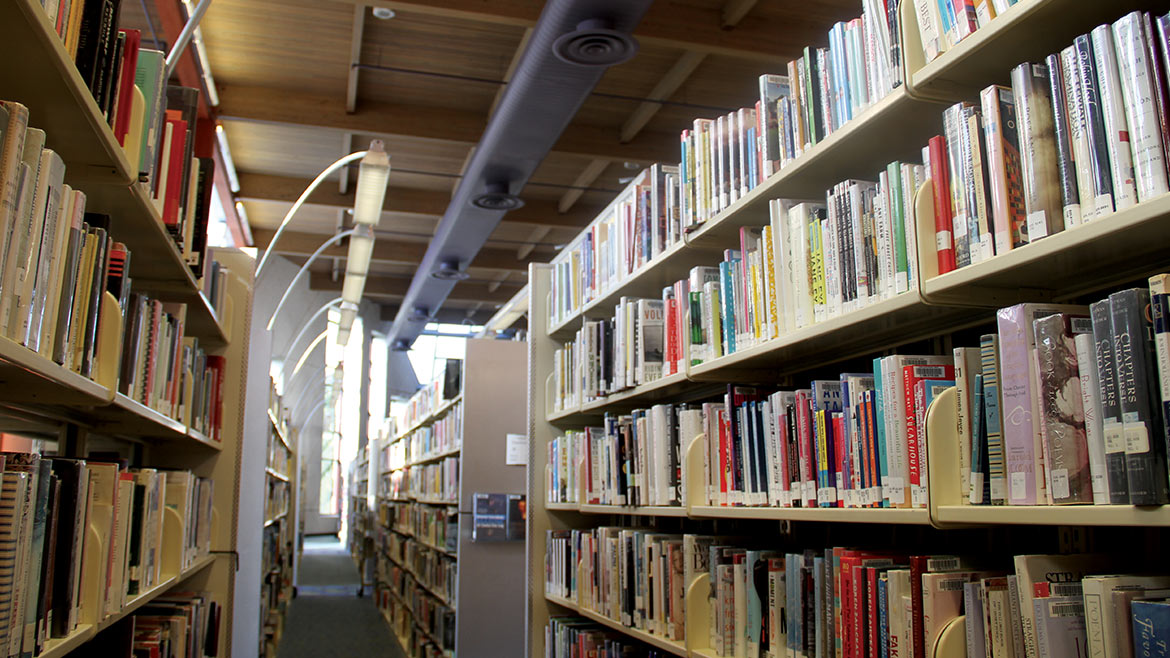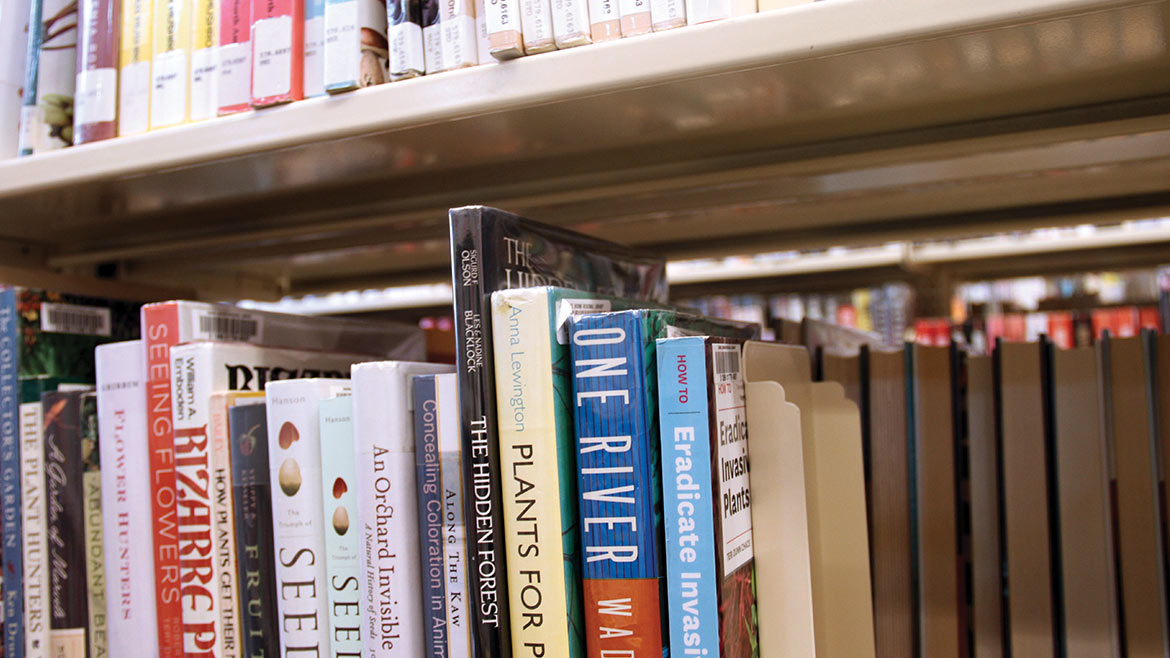Love Your Library: DBRL’s March to the Future
- photos by Jonné Pratt

Ten minutes before 9 a.m. on a hot and humid summer morning, dozens of patrons wait patiently outside the Daniel Boone Regional Library to start off their day. When it’s time, the doors open, and the crowd heads in and then off to the various areas of the building to work on various things — the library offers an array of tools for personal and professional growth, as well as business success. The 189 library employees work constantly to make it more convenient for patrons to access library materials, despite a restricted budget caused by a falloff in state funding.
Established in 1959, DBRL provides public library services to three library districts: Boone County Library District, Callaway County Library District, and the City of Columbia Library District, along with two bookmobiles. The Columbia Public Library building, serving as the DBRL headquarters, has been in several locations over the years. In 1971, the library moved from a building at Broadway and Seventh Street to its current location, at the corner of Garth Street and Broadway. The headquarters of the regional library system stands tall there, just outside of downtown, with a wall of windows going up the building’s north side and a 38-foot metal sculpture welcoming curious minds of all ages. The library was originally in a smaller building at the same location, but patrons wanted something bigger and better.
“People loved the library so much that they carried it from its previous, smaller location to our new and bigger library,” public relations administrator Mitzi St. John says. Librarians, as well as St. John, see the library as an information hub, where everyone can have the opportunity to use the benefits provided, thereby creating equal access to a world of information.
Leaning on the Community
The library offers its specialized services mainly thanks to property tax, which made up 94 percent of its 2015 budget, and various grants, donations, and investment income. Property tax is supposed to be buffered by state aid, which has been cut in recent years. “We have had some adjustments in state funding,” St. John says. “The percentage of what we get from the state is small. With the cuts that we have from the state, we get more money from grants and donations than we do from the state, and we use those funds to buy more library materials for people to check out. So [the state’s funding] does affect them.”
The 2016 state budget included $723,776 to be split among all the public libraries in Missouri. This is a decrease of 79 percent from the $3,504,001 appropriated the previous fiscal year. In other words, the public libraries in Missouri received 13 cents per capita this fiscal year, instead of 50 cents per capita. For DBRL, that equals approximately $26,400 in state aid for 2016, compared to $101,595 in 2015.
DBRL instead relies on Library Services and Technology Act grants administered by the Missouri State Library, a division of the Secretary of State’s office, to help improve the library’s collection and services: new mental health kits, early literacy education, summer reading in rural areas, replaced library-to-go lockers, funds for more books, Latino-American culture awareness programs, and the Backpacks for Kids program, to name a few.

Libraries have a reputation for being old-fashioned and archaic, but DBRL actively uses funds to incorporate technology into their services. They offer online classes through platforms like UniversalClass.com and Lynda.com; many businesses in Columbia use these classes and business tools on the library’s website to help their employees learn more about technology and other useful skills. “If there has been an advancement in technology, the library staff is on top of it,” DBRL patron Jane Church says.
The library also has meeting space available for one-on-one and drop-in tech help, where patrons bring in their personal devices and any questions they have, finding ways to get the most out of their own technology. “An IT staff member, Shash, helped me individually and saved hours of my time,” Church says. “When people go out of their way to go above and beyond, I want them to know the quality job that they did to help me.” The information desk has comment cards for patrons to review their experiences, which Church used to express her gratitude.
The DBRL’s digital branch, part of their online offering, has the Learning Express Library for library patrons, which is geared toward students and has online tutorials and test prep. The digital branch also offers technology classes, business tools, and other skills classes, including in-person classes in their studio rooms. “I went to a class to help people apply for jobs or work on their resumes, and the teacher instructed the class in a way that made me want to keep coming to classes at DBRL,” Church says, “A job came up that I was interested in, and staff member Carren inspired me to apply. They’re a fun-loving staff at DBRL.”
Setting the Mission
Besides the staff, the library also has a board of trustees that consists of 19 members within the entire district. John French, the secretary and warrant officer of the Columbia Library District Board, attends monthly DBRL board meetings that are open to the public in which the board discusses topics that would benefit the library. “The goal of the board is to assist in making good decisions for the library and to provide feedback regarding issues that may be controversial,” French says. Before French became a board member, former member Marie Glaze gave him an “insider’s view” into the various library programs provided by DBRL’s skilled librarians, influencing French to join the board to serve the library.
At a recent meeting, the board was able to view a new website for the library, which they hope to launch in October. “Not only did the board hear about changes in the new website, but also the programmer of the new website was there and was going over all the aspects of how it will look and the different pages on the website and what research could be done,” French says. “A few years back, when the internet was growing, the thought that libraries would go out of business was not true. Actually, the Columbia library has been able to enhance the availability of information through technology, in which you get these great services and things that you would have to pay for to use individually.”
A Community Partner
Having services available is one thing for the library; their bigger goal is getting the services and materials to those in Columbia who need a more convenient way to use them. The library, with the help of community partnerships, delivers library materials to retirement homes and homebound individuals — 835 items were delivered to 150 people in 2015. There are also services such as free tax preparation, through AARP, available through the library. For young adults, the library staff publishes a blog that has book reviews, homework assistance, ACT/SAT prep, and college information. Staff members also visit the Boone County Juvenile Justice Center, the Rosa Parks Center, and the Fulton Treatment Center to deliver library materials and services. The library coordinates a Public Library Leadership Fellows program; three students completed their practicum with DBRL in 2015, and another completed it in 2016. That program is funded through an Institute of Museum and Library Services grant awarded to the MU School of Information Science and Learning Technology.

On a practical level, the library is always open as a cooling or warming center for everyone in the hot summers or frigid winters. “One of the great things about the library being a warming and cooling center is that when people come to warm up or cool down, there is so much for them to do here,” St. John says. “They can use the computer, read, listen to music, or visit with friends.”
There are two bookmobiles and 27 off-site library collection areas. Thanks to a 2015 grant, the library provided backpacks to children in need who visited a bookmobile. The library has also been working on developing early literacy stations at all locations and offers programs such as the “Digital Playground” that have classes designed to spark children’s creativity using technology and exploratory play.
Another popular library program is One Read, a community book club in which the library seeks input from the public during the book selection process. The library has coordinated the One Read program for 15 years. During the month of November, the library asks the community to submit ideas for a book; then, a reading panel is put together, made up of people in the community and library staff, to go over the suggestions and narrow it down to ten titles. Then the members read each of those ten books and discuss which two would make the best book to discuss as a community. The community then votes for their favorite of two choices.
“We want a book that has issues in it, and we would like to invite the author to One Read or Skype him or her in during the month,” St. John says. Related One Read programs take place annually in September, when readers can participate in not only book discussions, but also programs that are related to some of the issues taking place in the book. This year’s book is “Bettyville,” a memoir by local author George Hodgman describing his experience returning home to Missouri from New York to take care of his aging mother.

Since the cut in state support, the library has had to rely heavily on its community for continued health, so DBRL’s robust community programs have become an integral part of the library’s identity. Everyone is welcome to use the many services, programs, and materials that the library provides to the community. The staff members are dedicated to helping patrons find the help that they need, whether it’s related to business, technology help, student information, or just cooling down and streaming free music. The library is here for Columbia. All it takes is a library card.


